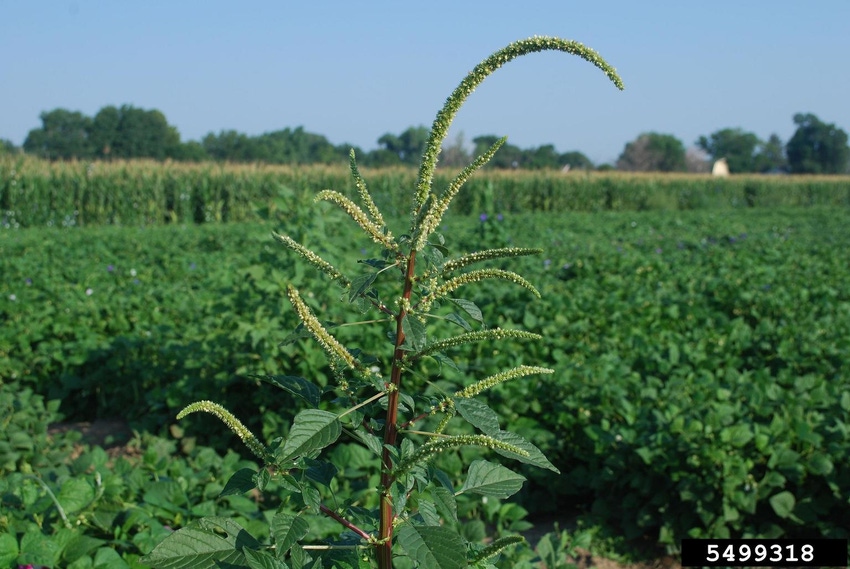July 30, 2019

If you don’t already have to deal with waterhemp or Palmer amaranth, you don’t want it. Ask anyone who does. Neither one of these weeds is easy to manage, and both can cause substantial increases in the cost of herbicide programs, which have to be constantly changed to account for the multiple resistance that will develop over time (not “can”, “will”). The trend across the country is for Palmer and waterhemp to develop resistance to any new herbicide sites of action that are used in POST treatments within about three cycles of use. Preventing new infestations of these weeds should be of high priority for Ohio growers.

When not adequately controlled, Palmer amaranth can take over a field faster than any other annual weed we deal with, and waterhemp is a close second. Taking the time to find and remove any Palmer and waterhemp plants from fields in late-season before they produce seed will go a long way toward maintaining the profitability of Ohio farm operations. There is information on Palmer amaranth and waterhemp identification on most university websites, including ours – u.osu.edu/osuweeds/ (go to “weeds” and then “Palmer amaranth”). An excellent brief video on identification can be found there, along with an ID fact sheet. The dead giveaway for Palmer amaranth as we move into late summer is the long seedhead, and those on female seed-bearing plants are extremely rough to the touch. We recommend the following as we progress from now through crop harvest:
- Take some time now into late summer to scout fields, even if it’s from the road or field edge with a pair of binoculars. This would be a good time to have a friend with a drone that provides real-time video, or your own personal satellite. Scouting from the road is applicable mostly to soybean fields, since corn will often hide weed infestations. Scout field borders and adjacent roadsides, areas that flood or receive manure application, and also CREP/wildlife area seedings. The latter can become infested due to contaminated seed produced in states where Palmer amaranth and waterhemp are endemic and not considered noxious. Reminder - ODA will test any seed used for these purposes for the presence of Palmer amaranth.
- Walk into the field to check out any weeds that could be Palmer amaranth, waterhemp, or are otherwise mysterious. If you need help with identification, send photos to us or pull plants and take them to someone who can identify them. Palmer and waterhemp are considerably different in appearance than giant ragweed and marestail, the other two most common late-season offenders.
- Where the presence of Palmer amaranth or waterhemp is confirmed, check to see whether plants have mature seed (in Palmer infestations these are the rough female seedheads), by shaking/crushing parts of the seedhead into your hand or other surface that will provide contrast. Mature seed will be small and very dark. Plants without mature seed should be cut off just below the soil surface, and ideally removed from the field and burned or composted. Plants with mature seed should be cut off and bagged (at least the seedheads) and removed from the field, or removed via any other method that prevents seed dispersal through the field.
- If the Palmer amaranth or waterhemp population is too dense to remove from the field, some decisions need to be made about whether or how to mow or harvest. Harvesting through patches or infested fields will result in further spread throughout the field and also contamination of the combine with weed seed that can then be dispersed in other fields. So consider: 1) not harvesting areas of the field infested with Palmer amaranth or waterhemp, and instead mowing several times to prevent seed production, and 2) harvesting the infested field(s) after all other fields have been harvested, and cleaning the combine thoroughly before further use. This also applies to any infestations that are discovered while harvesting. At least one equipment manufacturer has a good video about how to most thoroughly clean a combine.
Source: Ohio State University
The source is solely responsible for the information provided and is wholly owned by the source. Informa Business Media and all its subsidiaries are not responsible for any of the content contained in this information asset.
You May Also Like




